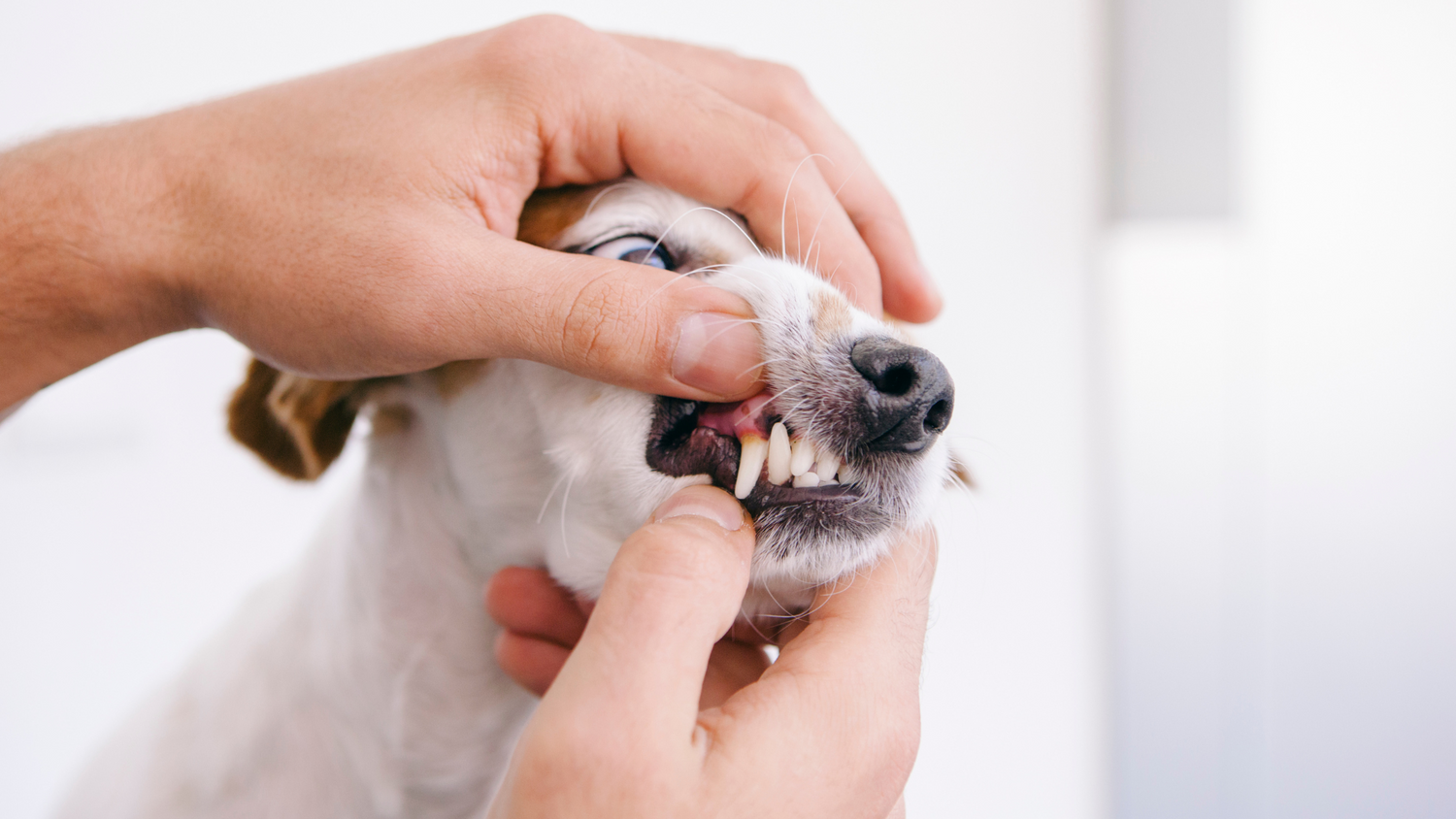If you’ve ever had an ear infection, you’ll be well aware of the sheer annoyance and irritability that comes with it. Unfortunately, it’s no different for our fur baby.
Paw-parents might start to become concerned when their furry friend starts acting differently. You may notice an-off smell, or your dog constantly itching their ears and shaking their head. These are all pretty classic signs that your dog may have an ear infection.
Types of Ears
Let’s start off by knowing the basics. Dogs' ears come in all shapes and sizes. Some of the most common include:
- Drop ear: ears that hang down over the side of the head
- Prick ear: pointed ear that stands erect
- Rose ear: ear that folds backward
- Semi-prick ear: pointed ear that folds over slightly on the top
- V-shaped ear: long ear that ends in a v-shape
While all dogs’ ears need TLC, there are some breeds that are more susceptible to ear infections. Dogs with drop ears or folds require extra attention because the shape of their ear causes more moisture to become trapped.
Signs Of Ear Infection
It’s important to be aware of the warning signs of an ear infection. Ear problems can appear overnight, so it’s best to not delay getting care for your dog if you notice any signs of ear trouble. If you see any of these common signs, we recommend taking your dog to the vet:
- Frequent scratching or pawing at ears, head shaking or rubbing of ears against a hard surface
- Discharge
- Odor
- Constant tilting of the head or drooping of the ear downwards
- Redness or swelling
- Crusty skin inside or around the ears
- Hair loss around the ears
- Excessive dark earwax
Common causes of dog ear infections
Ear infections are a common canine health problem, and they can be caused by many factors. This includes:
- Allergies - did you know dogs with allergies are prone to getting ear infections? Ear infections are often a secondary symptom of underlying allergies, especially allergies to dust mites, pollens, molds, and animal proteins in dog foods.
- Grass seeds - Grass seeds can get lodged in the ear canal and cause ear infection. In most cases, when caught quickly your vet can remove them under a quick sedation.
- Ear mites - these nasty little parasites feed on wax and oils in your dog’s ear canals and can result in head shaking or scratching, rubbing of the ears and secondary ear infections.
- Bacteria and yeast - These are the most common causes of canine ear infections. This type of infection requires medication from your vet for effective treatment.
- Water - If you have a water loving dog, they may get a build up of moisture in the ear canal. After your dog’s ears have been exposed to water, let them shake it out and make sure their ears are well dried.
- Hereditary issues - dogs with extra long, floppy ears are more likely to get ear infections as the covered ear canals can become warm and humid. As mentioned earlier, this creates the perfect environment for bacteria and yeast to grow. Also, breeds that have narrow ear canals, or hairy canals, are prone to ear infections.
Cleaning Your Dog’s Ears
Follow these easy steps to clean your dog’s ears:
- Get your furry pal to sit, and reward them with a treat and allow them to inspect the ear cleaner
- If his ears aren’t already erect, hold the ear flap upright and carefully fill the ear canal with cleaning solution
- Keeping the ear flap out of the way, gently massage the ear with your fingers for about twenty seconds
- Release the ear and allow your dog to shake his head if he desires. Hold a towel over his head to prevent the solution from flying everywhere
- Use a cotton ball or cotton pad wrapped around your index finger to gently wipe the visible part of your dog’s ear canal and outer ear. Use a cotton swab only if necessary and only on the visible portion of your dog’s ear.
- Reward your pup with Pet Drs Novel Protein Treats and then repeat these steps for the other ear.
How to Make It Easier (for both you and your pet!)
1. Make it a good experience
Many dogs aren’t the biggest fan of getting their ears earned, so you’re going to have to work with them. Make the experience as enjoyable as possible by taking it slow and associating ear-cleaning with something positive… TREATS! Reward your dog with a treat each time they cooperate during the process.

Does your dog have food allergies? Pet Drs know that treats are an important part of a dog's life, which is why we have carefully crafted these novel protein treats specifically for sensitive tummies and skin that cannot cause irritations to your furry friends! Our novel protein treats come in three flavours: goat heart, kangaroo kidney and wild boar liver. Click here to check them out!
2. Get all the right tools
Proper cleaning begins by gathering the right supplies. Here’s what you need:
- Ear cleanser - Use a veterinarian-approved ear-cleaning solution to release wax and debris from the canal and help dry the ear. Some dogs have very little build up in their ears and onl;y need the occasional clean. Other dogs need thorough ear cleaning every week or two. Over-cleaning can cause irritation, but under-cleaning can lead to infection.
- Cotton balls or pads - Just like with human ears, you never want to use cotton swabs because they can hurt your dog’s ears. Instead, use cotton balls or pads
- Tweezers - These are good to have on hand if your dog has lots of hair in his ears
- A towel - Keep an old towel on standby for any potential messes, especially if your dog is prone to shaking his head
- Treats - Reward your pup!
3. Put everything within arms reach
The last thing you want to do mid-way is discover you forgot something and have to get up to find it. You want to make this experience quick and easy for your dog. Many dogs don’t enjoy getting their ears cleaned, so getting up and moving around might result in needing to wrangle your dog back into position and making the process longer than needed.
Preventing Ear Infections
- Rule out underlying issues
As said earlier, an ear infection can be a secondary symptom of underlying allergies. Therefore, it’s only through treating these underlying causes that ear infections can be prevented. Therefore, it’s recommended to get your dog allergy tested, and try to avoid allergens as much as possible. These could be allergens in the environment, or food allergies or food sensitivities.
You probably know by now, moisture is BAD. This is especially true for floppy ear breeds like retrievers or cocker spaniels, as their ears trap more moisture and create a perfect environment for bacteria and yeast. If your dog loves going for a splash, clean his ears regularly after water exposure. Also, after a bath, remember to make sure the ears are nice and dry.
3. Keep the ears clean
Make sure to keep up a good ear cleaning routine!

If you suspect allergies are the root cause of your dog’s ear infections, a daily supplement of essential oils and fatty acids can help. Pet Drs Mega Oil contains a supreme blend of Omega 3.6 & 9 oils that are mixed with only the finest ingredients. These oils prevent and improve leaky gut syndrome by regulating the immune system and lowering inflammation.
If you notice your dog is constantly itching, they may also have atopic dermatitis (eczema). This is a common inflammatory, chronic skin disease associated with allergies. It typically affects pups aged 6 months to 3 years and is the second most common allergic skin disease in dogs, after flea allergy dermatitis.
To relieve the skin and reduce inflammation, you can apply Pet Drs Derma Cream to itchy and irritated skin. The formulation is developed with your pets’ sensitive skin in mind and has powerful ingredients that are pH balanced so it’s totally lickable!





